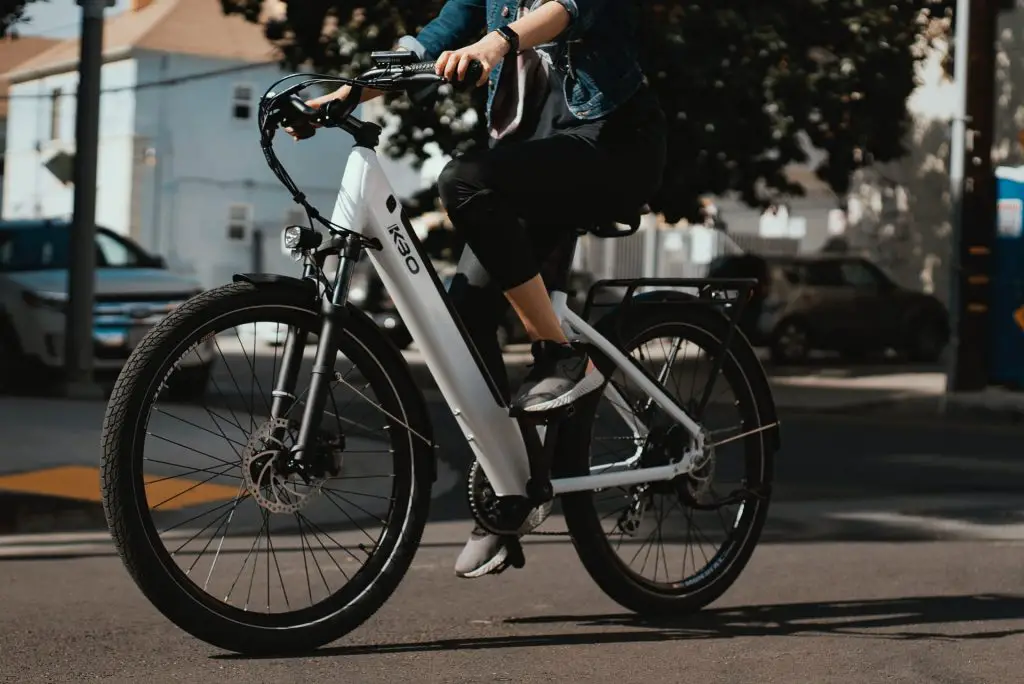Electric bikes, also called e-bikes, are becoming more and more popular these days. E-bikes give you some extra power while you pedal, thanks to a small electric motor and a battery. But how long do those e-bike batteries really last?
The battery life
Lots of things affect how long an e-bike battery will last. The main factors are:
- The size of the battery
- How you use and take care of the battery
- The type and quality of the battery
In general, a high quality lithium ion battery for an e-bike will last for around 500 to 1000 full charges. If you recharge the battery after every ride, you should get at least 2 to 5 years of life out of it.
Some e-bike riders get even more than that from their batteries with proper care and maintenance. But for most people, you can expect to get a good 2 to 5 years before you’ll need to replace the battery.

Battery size matters
One big factor in e-bike battery life is the size of the battery. Batteries are rated by their capacity in watt-hours (Wh). A higher Wh number means a larger battery that can store more power.
Most e-bike batteries are in the 250 to 500 Wh range. Here’s how the size affects lifespan:
- Small batteries (250 Wh): May last for around 300 to 500 charges.
- Medium batteries (350 – 400 Wh): Usually last for 500 to 800 full charges.
- Large batteries (500+ Wh): Can last for 800 to 1,000 charges or more.
So if range is important to you, it’s wise to get the largest battery you can afford. This will give you more power per ride and a longer lifespan over years of use.
Riding and charging habits
How and where you ride your e-bike has a big impact on battery lifespan too.
If you ride aggressively at maximum power and do lots of hills, you’ll drain the battery faster. Taking it easy on flatter terrain makes your battery last longer.
Also, best practice is to recharge an e-bike battery after every ride. Fully draining or leaving batteries empty damages them over time. Regular top-ups are healthier for lithium-ion batteries.
Storing batteries properly is key too – keep them at around 70°F and 40-60% charge when not in use. Avoid temperature extremes.
With careful use and charging habits, you can maximize your battery’s life expectancy. But if you’re hard on your e-bike, expect shorter lifespan from the battery.

Battery types and quality
There are a few main types of lithium-ion batteries used for e-bikes:
- Lithium Nickel Manganese Cobalt Oxide (NMC) – Most common, made from safer chemicals. Offers good performance at lower cost. Around 500 cycles.
- Lithium Iron Phosphate (LiFePO4) – Safer cathode, less prone to damage. Up to 1,000 cycles but lower performance.
- Lithium Nickel Cobalt Aluminum Oxide (NCA) – Less stable but very high performance. Lifespan around 700 cycles. Used by high-end brands.
- Lithium Titanate Oxide (LTO) – Most durable and stable chemistry. Up to 2,500 cycles but expensive. Used only in premium e-bikes.
Battery quality matters too – cheap generic cells won’t last as long as name brands from LG, Panasonic, Samsung, etc. Paying more for a high-end battery often pays off over time.
So consider battery chemistry and quality when buying your e-bike. Premium batteries last longer but cost more up front.
Lifespan tips and conclusion
To get the most life from your e-bike’s battery:
- Choose a large, high quality battery from a leading brand
- Charge frequently, avoid fully draining
- Store batteries properly when not in use
- Don’t stress the system by running on max power
- Consider upgrading to lithium titanate oxide (LTO) batteries
With regular care and maintenance, you can expect an average lifespan of 2 to 5 years from a lithium-ion e-bike battery. Large, high-quality batteries on the upper end of that range. Plan on battery replacement every 3-5 years as a normal cost of owning an electric bike.






